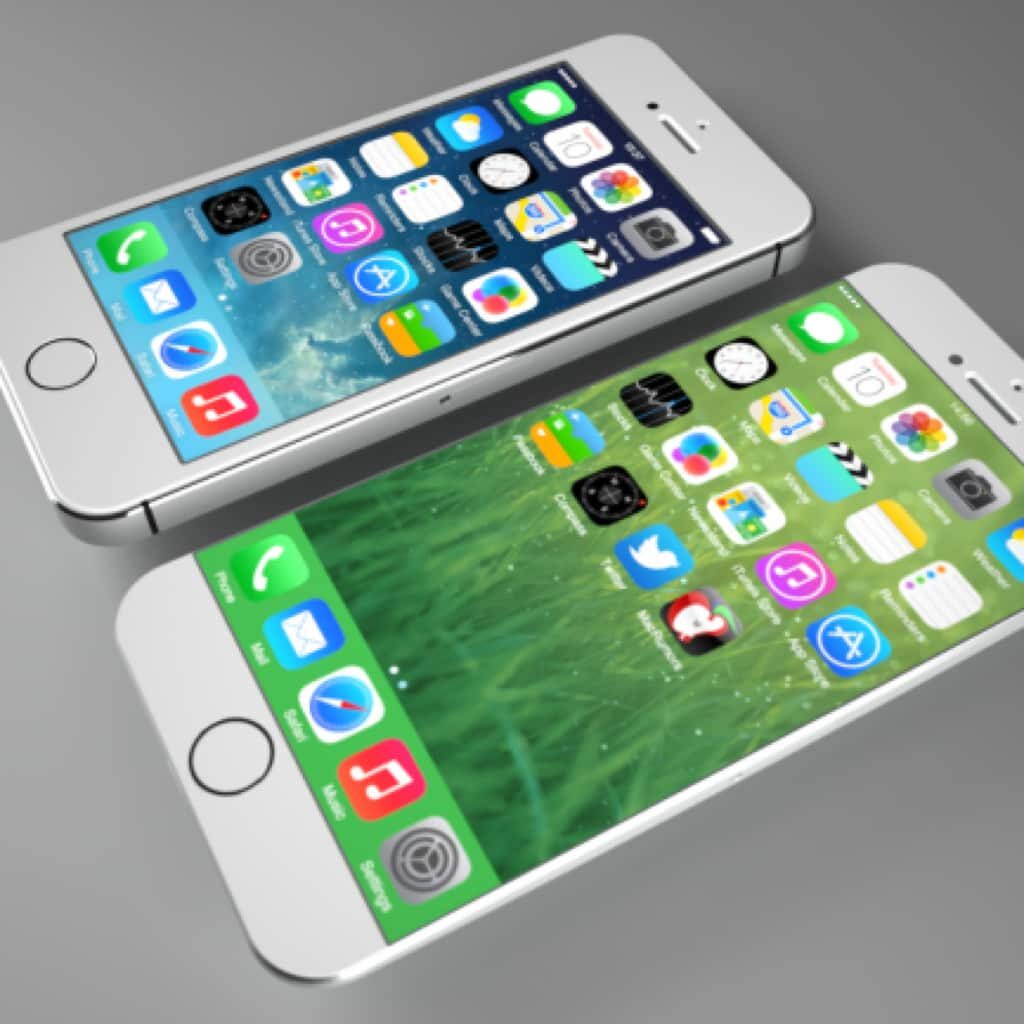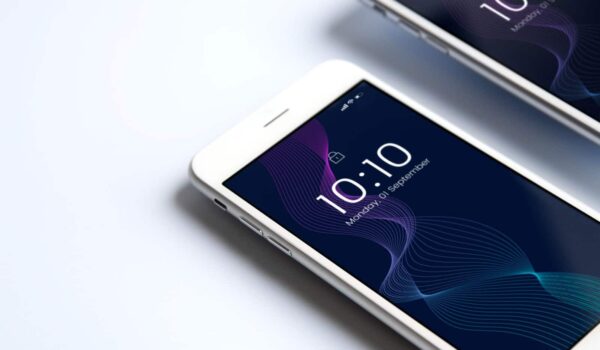With its revolutionary features and sleek design, the iPhone 6 marked a significant milestone in Apple’s smartphone evolution. It quickly became a cultural icon, setting trends and redefining user expectations since its release in 2014.
What features does the iPhone 6 have?

Design nuances — a larger 4.7-inch Retina HD display and thin edges. The aluminum body and smooth transition from glass set the benchmark for aesthetics and ergonomics, creating a device that feels premium and comfortable in the hand:
- Retina HD display marked a significant leap in Apple’s screen technology. The 4.7-inch display boasted a resolution of 1334 x 750 pixels, delivering crisp visuals, vibrant colors, and excellent viewing angles;
- The display’s accuracy in color reproduction and brightness ensured an immersive viewing experience for users, whether gaming, streaming, or browsing content;
Furthermore, the incorporation of improved polarizers and an ion-strengthened glass layer enhanced durability, reducing glare and making the screen more resistant to scratches and impact damage.
Performance and Innovation

Underneath its elegant exterior housed the A8 chip, a powerhouse that delivered enhanced performance and efficiency. This processor not only boosted speed but also improved power management, contributing to a smoother user experience and longer battery life.
The iPhone 6’s performance and innovative features played a pivotal role in solidifying its position as a game-changer in the smartphone industry upon its release.
- A8 Chip. At the heart of the iPhone 6 was the A8 chip, Apple’s second-generation 64-bit processor. This chip represented a leap in performance and efficiency compared to its predecessor. Built on a 20-nanometer process, the A8 brought a 25% increase in CPU performance and a 50% increase in GPU performance. This not only boosted the device’s raw power but also contributed to smoother multitasking, faster app launches, and improved gaming experiences;
- Efficiency and Battery Life. The A8 chip wasn’t just about raw power; it was also designed with efficiency in mind. Despite the enhancements in performance, it was more power-efficient, leading to a notable improvement in battery life compared to earlier models. This efficiency translated to longer usage times, ensuring that users could rely on their devices throughout the day without constantly needing to recharge;
- Innovative Camera Capabilities. The iPhone 6 introduced significant improvements to its camera capabilities. The 8-megapixel iSight camera featured advancements in sensor technology, allowing for better low-light performance, faster autofocus, and enhanced image stabilization. Additionally, the inclusion of features like slo-mo video and time-lapse expanded the creative possibilities for users, demonstrating Apple’s commitment to innovation in mobile photography and videography;
- Optimized Software Integration. The synergy between hardware and software was evident in the iPhone 6’s performance. iOS 8, the operating system it debuted with, was optimized to leverage the capabilities of the A8 chip fully. This ensured a seamless user experience, with smoother navigation, quicker responses, and enhanced functionality.
Overall, the iPhone 6’s performance and innovative features, from its powerful A8 chip to its advanced camera capabilities, were instrumental in pushing the boundaries of what a smartphone could achieve, setting new standards for performance, efficiency, and user experience in the mobile landscape.
Camera Capabilities

Apple revamped the iPhone’s camera capabilities with the 8-megapixel iSight camera, introducing improved autofocus, better low-light performance, and enhanced image stabilization. The addition of slo-mo video and time-lapse features expanded creative possibilities for users.
The iPhone 6 introduced notable advancements in its camera capabilities, reshaping the way users engaged with smartphone photography.
- Enhanced Optics and Sensor Technology. Equipped with an 8-megapixel iSight camera, the iPhone 6 emphasized quality over sheer megapixel count. Apple fine-tuned the camera’s optics and sensor technology, optimizing it for improved light sensitivity and detail capture. This enhancement resulted in crisper, more vivid images even in varying lighting conditions;
- Swift Autofocus and Image Stabilization. The inclusion of faster autofocus technology heightened the camera’s responsiveness, enabling quick and accurate focusing on subjects. Moreover, the integration of image stabilization functionality minimized blurring caused by hand movement, ensuring sharper photos and smoother videos, particularly in challenging shooting environments;
- Innovative Features. Apple introduced innovative features to the iPhone 6’s camera arsenal, democratizing creative expression for users. Slo-mo video recording enabled captivating slow-motion clips, adding a new dimension to video storytelling. Time-lapse functionality empowered users to capture the gradual passage of time in a visually striking manner, all directly from their iPhones;
- Software Optimization and User Experience. The synergy between hardware and software was evident in the iPhone 6’s camera performance. Coupled with iOS 8’s user-friendly camera app interface, users could effortlessly navigate settings and capture moments with ease, regardless of their photography expertise. This seamless integration amplified the overall user experience, encouraging more individuals to explore their creativity through photography;
- Legacy and Influence. The iPhone 6’s camera innovations laid the groundwork for subsequent iPhone iterations. Apple’s continuous refinement of camera technology, paired with software enhancements, solidified iPhones as go-to devices for capturing high-quality photos and videos, ultimately reshaping the landscape of mobile photography.
The iPhone 6’s camera capabilities not only represented a leap forward in smartphone photography at the time but also set a precedent for future advancements, showcasing Apple’s commitment to empowering users with innovative imaging tools.
iOS and Ecosystem Integration
The iPhone 6 debuted with iOS 8, bringing a host of new functionalities like Apple Pay, expanded Siri capabilities, and improved multitasking. Its seamless integration within the Apple ecosystem further enhanced user convenience and connectivity.
The iPhone 6’s integration with iOS and the broader Apple ecosystem was a cornerstone of its appeal, offering a seamless and interconnected user experience.
- iOS 8. Debuting with iOS 8, the iPhone 6 introduced a wealth of new features and enhancements that significantly enriched the user experience. This iteration of iOS brought forth Apple’s focus on continuity, offering smoother interactions between devices and introducing functionalities like Handoff, allowing users to seamlessly start tasks on one device and continue on another;
- Apple Pay and Wallet Integration. One standout feature was the introduction of Apple Pay, revolutionizing mobile payments by allowing users to make secure transactions using their iPhones. Wallet integration centralized various cards, tickets, and passes, offering a convenient and secure repository accessible with just a few taps;
- Enhanced Siri and Notifications. iOS 8 brought refinements to Siri, Apple’s virtual assistant, expanding its capabilities and making it more contextually aware. Additionally, improved notifications provided greater interactivity and customization, enabling users to manage their alerts more efficiently;
- Enhanced Multitasking and Productivity. The iPhone 6, coupled with iOS 8’s enhancements, offered improved multitasking capabilities, allowing users to seamlessly switch between apps and handle tasks more efficiently. This was complemented by additions like predictive typing and expanded third-party app integration, fostering increased productivity;
- Ecosystem Synergy. The iPhone 6 seamlessly integrated with other Apple devices, fostering a cohesive ecosystem experience. Users could effortlessly synchronize their data, messages, and content across iPhones, iPads, Macs, and other Apple products. This synchronization, along with features like iCloud Drive, reinforced the convenience and appeal of owning multiple Apple devices;
- Legacy and Continuity. The strides made in iOS 8 and the iPhone 6’s integration with the broader Apple ecosystem set the stage for future innovations. Continual refinements and advancements in iOS have further strengthened the interconnectedness between Apple devices, fostering a loyal user base and solidifying the company’s ecosystem approach.
In essence, the iPhone 6’s integration with iOS 8 and the wider Apple ecosystem exemplified Apple’s commitment to providing users with a seamless, interconnected experience, enhancing convenience, productivity, and the overall user journey.
Enduring Impact and Legacy
Beyond its immediate success, the iPhone 6’s impact resonates through subsequent Apple models and the broader smartphone industry. Its design language influenced future iterations, and its performance benchmarks set new standards for mobile devices.
The enduring impact and legacy of the iPhone 6 extend far beyond its initial release, leaving an indelible mark on the smartphone industry and consumer expectations.
- Design Language and Form Factor Influence. The iPhone 6’s sleek design, characterized by its thin profile, rounded edges, and larger display, redefined the aesthetics of smartphones. Its influence resonated throughout subsequent iPhone models and across various smartphone brands, driving a shift towards larger yet ergonomically comfortable designs;
- Pioneering Technological Advancements. Key technological advancements introduced with the iPhone 6, such as the A8 chip, advanced camera capabilities, and iOS 8 functionalities, set benchmarks for performance, photography, and software integration. These innovations influenced the evolution of smartphones, with subsequent models aiming to match or surpass the standards set by the iPhone 6;
- Cultural and Consumer Impact. The iPhone 6’s launch created a significant cultural moment, captivating consumer interest and fueling enthusiasm for Apple’s products. Its popularity and widespread adoption reinforced Apple’s position as an industry leader and trendsetter, shaping consumer preferences and expectations for what a premium smartphone should offer;
- Ecosystem and User Experience Evolution. The iPhone 6 contributed to the evolution of Apple’s ecosystem approach, emphasizing seamless integration across devices and services. This focus on ecosystem synergy reshaped how users interacted with their devices and content, establishing a user experience that transcended individual gadgets;
- Continued Influence on Subsequent Models. Elements introduced in the iPhone 6, from its design philosophy to technological innovations, continued to echo in successive iPhone iterations. Each subsequent release built upon the foundations laid by the iPhone 6, further refining and expanding upon its features and concepts.
- Industry Benchmark and Lasting Significance. Despite being several years old, the iPhone 6’s legacy endures as a symbol of Apple’s innovation and its ability to shape the technological landscape. Its impact on smartphone design, performance expectations, and user experience continues to be felt, underscoring its enduring significance in the ever-evolving realm of technology.
Beyond its tangible features, the lasting impact of the iPhone 6 has been its cultural, technological, and consumer influence, which has left a distinctive mark on the evolution of smartphones and user expectations.
Conclusion
Representing a combination of innovation and user experience, the smartphone remains one of the most important devices in Apple’s history. It continues to evolve, setting the bar high for subsequent models and shaping consumer expectations.
